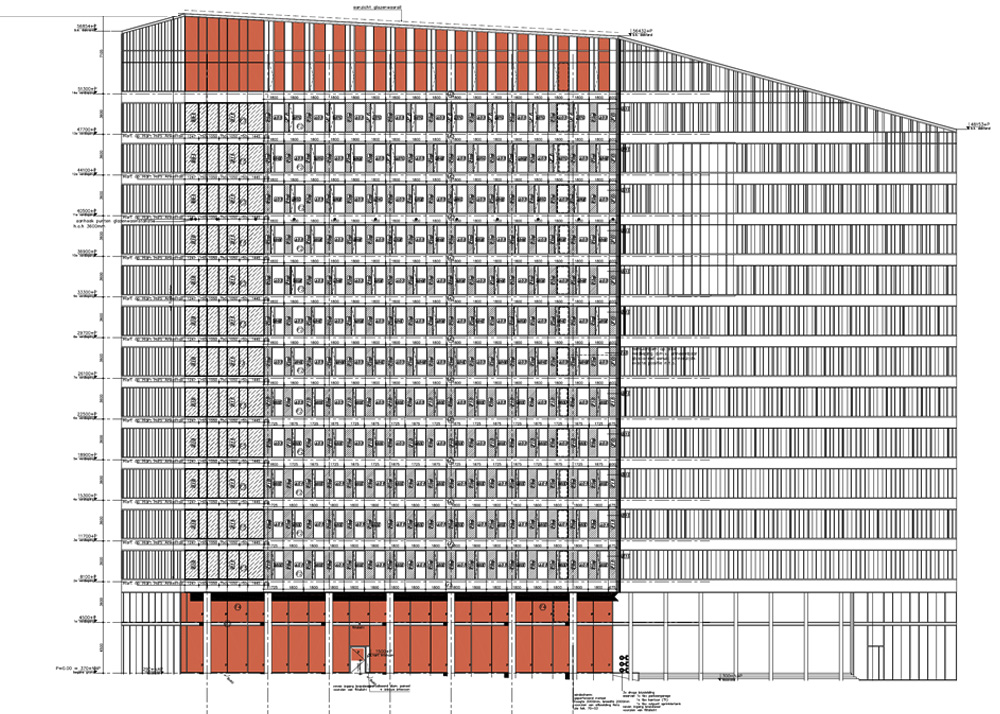Introduction to BIM
3D facade modeling offers various advantages during the design phase including time & cost savings. Creation of facade models facilitates reduction of a number of steps, improving design time, at the same time retaining minute details of the final architecture plan. Facade modeling allows architects to visualize the building in physical space and predict clashes.Building Information Modeling is the process of creation of parametric, or intelligent, 3D models instead of 2D perspective ‘un-intelligent’ drawings. A BIM model operates on a digital database . Any change made to the BIM database is reflected throughout the entire set of drawings. Every party involved in the building lifecycle (architects, engineers, contractors, developers, and building owners) – will be able to sync together their corresponding database allowing them to view the model in different ways. This allows seamless sharing of information without any hiccups.
There are endless number of advantages for utilizing BIM in construction. Some of them are:
- Saves time
- Reduces information loss
- Easy accommodation of design revisions
- Saves project cost
- Risk sharing
- Peak load sharing
- Easy handing over from one party to next
BIM enables the production construction documents that resemble those created by 2D CAD Drafting, but are which are much faster and contain precise information about structure, quantities, materials and other data that can be used in both phases— the construction and management of a building. Using BIM, designers may assess the building design in detail and locate human errors, if any.
BIM can greatly reduce errors made by design team members as well as by the construction team (Contractors and Subcontractors) by enabling the use of conflict detection where the computer actually informs team members about parts of the building that are in conflict or clashing, and through detailed computer visualization of each part in relation to the total building. This kind of error reduction allows for a great part of time & cost savings realized by all members of a project. It is important to realize that this reduction can only be accomplished if the models are sufficiently developed from the Design Development phase. The Industry Foundation Classes (IFC/ifcXML) are an open forum for Building Information Modeling (BIM) and are used to share and exchange BIM in a neutral format among various software applications. GBxml is an emerging schema, a subset of the Building Information Modeling efforts, focused on green technology and operation.
BIM in Façade
 Utilization of BIM in Façade industry enables Facade
Engineers to effectively manage the façade design and fabricators to
manage the manufacturing process. This will result in the development of
both functionally and aesthetically superior complex building envelopes
that are crucial to contemporary buildings. From the perspective of a
façade engineer, BIM creates room for a better and more effective
communication of details and quantities of a building among the various
parties involved including designers, construction workers, architects,
etc.
Utilization of BIM in Façade industry enables Facade
Engineers to effectively manage the façade design and fabricators to
manage the manufacturing process. This will result in the development of
both functionally and aesthetically superior complex building envelopes
that are crucial to contemporary buildings. From the perspective of a
façade engineer, BIM creates room for a better and more effective
communication of details and quantities of a building among the various
parties involved including designers, construction workers, architects,
etc. The primary purpose of implementing a BIM model in facade systems is to solve design issues and conflicts between facade building components before the actual construction process. This will enable considerable saving of time and money in all stages of construction process. The core of Façade BIM process is the transition of an authoritative BIM model among the various parties involved from which a complete and accurate set of construction documents are extracted.
Implementation of BIM in Façade is envisaged in the following three phases.

